Celebrate the local flavor of Setouchi
The abundant seafood, game and vegetables of the Setouchi region on Japan's serene Inland Sea have a distinctive character all their own. Explore the bounty of Setouchi's fertile land and teeming waters at one of these fine restaurants in Hiroshima or Okayama Prefecture.
 Fa niente
Easygoing Italian
Fa niente
Easygoing Italian
 Kaiseki Hana-o
Star hospitality
Kaiseki Hana-o
Star hospitality
 Kappo Hakutaka
Venerable yet relaxed
Kappo Hakutaka
Venerable yet relaxed
 Sushi Yamamoto
Mild, classic sushi
Sushi Yamamoto
Mild, classic sushi
 Hiroto
Fresh and finicky
Hiroto
Fresh and finicky
Fa nienteファニエンテ
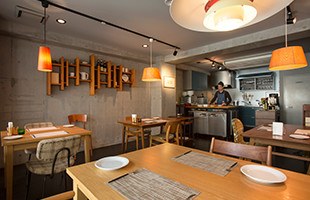
Phone: 090‒1353‒8002
- Address:
- 2F, BOSCO, 2-1-3 Tamachi, Kita-ku, Okayama, Okayama
- Open:
- 6:00 pm – (closing time varies by reservations)
- Closed:
- Irregular
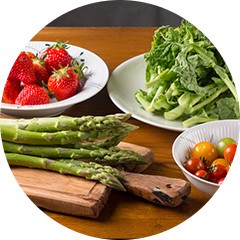 The terroir of Setouchi
The terroir of Setouchi
The terroir of Setouchi

"Whether cooking Italian or other cuisine, I enjoy using ingredients that are only available locally," says owner chef Komoto. Today's vegetables were raised in Ushimado and purchased from an agricultural cooperative. The peaches, muscats and other fruit in his dolce (Italian dessert) are a feast for the eyes. He grows the tomatoes in the backyard of his home.
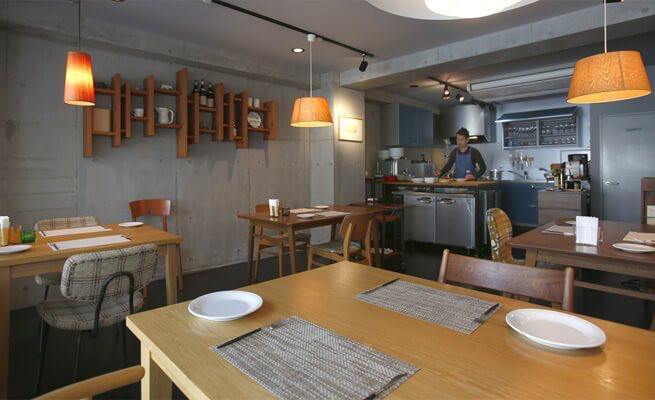
Many of the furnishings are from the chef's home and create a homey atmosphere that attracts customers. "There's nothing to make a fuss about here," he quips.

Salsiccia (Italian sausage) from the meat wild boars captured in northern Okayama. We highly recommend it.
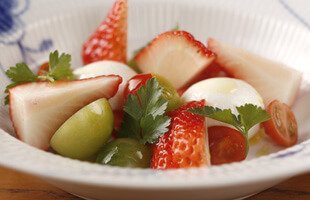
Delicious buffalo mozzarella salad with mini tomatoes, strawberries, olive oil and a pinch of salt.

After working as a chef in Tokyo and Osaka, chef Komoto returned to Okayama to create its finest Italian restaurant.

Italian wines complement the cuisine. The selection is inspired by the chef's visits to Italian wineries in his younger days.
Easygoing Italian
"Fa niente" means "it's nothing", which conveys the restaurant's lack of pretension despite incredible cuisine. The bare cement building in downtown Okayama Prefecture has no restaurant sign, which surprises first-time visitors. Upon entering the small restaurant on the second floor, they discover a casual open kitchen layout with a warm, welcoming atmosphere. The chef works so close to the diners that it feels more like a home than a restaurant.
When asked to comment, owner chef Masaki Komoto replies with a smile, "I started this place nine years ago on a very low budget. Some of the chairs and tables are from my home, and I collected most of the other furnishings many, many years ago." That partially explains the homey warmth. The fine Italian cuisine also has a certain homemade quality about it.
"I worked closely with an Italian chef early in my career and he prepared the dishes in a casual manner that made a lot sense to me," he explains. "It helped me more fully appreciate the art and joy of cooking."
He feels at ease in the cozy space and only uses natural meat, fish and vegetables, never playing the eccentric with his down-to-earth Italian cuisine. Nearby customers can literally feel his authenticity and ever-pleasant mood.
While serving us salsiccia (Italian sausage), he remarks, "This dish includes boar meat from Mimasaka in northern Okayama. My customers continue to enjoy wild game." Savoring every bite, we come to realize why gourmets in Okayama flock to this restaurant night after night.

Phone: 090‒1353‒8002
- Address:
- 2F, BOSCO, 2-1-3 Tamachi, Kita-ku, Okayama, Okayama
- Open:
- 6:00 pm – (closing time varies by reservations)
- Closed:
- Irregular
Kaiseki Hana-o懐石料理 花お

Phone: 082-827-0421
- Address:
- 3972 Hatakacho, Aki-ku, Hiroshima, Hiroshima
- Open:
- Lunch: 00:00 pm - (closing time depends on reservations)
Dinner: 6:00 pm - (reservations required) - Closed:
- Irregular
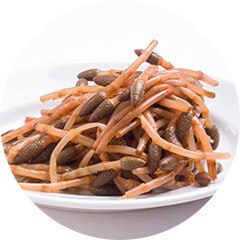 The terroir of Setouchi
The terroir of Setouchi
The terroir of Setouchi

Rather than rely solely on ingredients procured from Hiroshima, the chef visits local markets to carefully select the best available. Even in spring, he chooses wild vegetables from Tohoku over local varieties if their quality is higher. While typically using locally grown wild horsetail in season, today's horsetail is from Hiroshima.

Today's kaiseki ryori course with tai (sea bream) and sayori (halfbeak). The Chinese yam on sesame cream is topped with sea eel and snap peas. Dishes vary by season.

The owner renovated the barn himself, providing only 10 seats so every guest enjoys utmost space and comfort.

The tube audio system is dear to the owner's heart and plays modern jazz in the background without disturbing meals or conversations.

"Sake that complements the cooking is best," says the chef, who stringently selected the brands on the menu.

Owner Ozaki has been following this path for over 40 years. He always prepares every meal with his whole heart.
Star hospitality
You may be skeptical until you arrive at the restaurant... Or, to be more candid, until the dishes arrive at your table. The location of the restaurant will surprise you, for example. It's about 30 minutes from Hiroshima City by car. The scenery through the windshield gradually transitions from busy streets to residential areas and unspoiled landscapes with rice paddies between mountain foothills. Then you reach Hataka in Aki ward and discover the restaurant is a renovated barn. A tube amplifier plays modern jazz in the background and you begin to wonder if you're in the right place...
However, everything changes when the first dishes are served. The cuisine is alive with the philosophy of owner Satoshi Ozaki, who has been studying the tea ceremony since he was in his twenties. He cultivated the philosophy while training at Kagairo and Kagaman, two renowned traditional Japanese restaurants in Osaka. And he has been following the same culinary path for 40 years now.
The ingredients in his dishes are highly seasonal and reflect his simple philosophy that "ingredients themselves vouch for the deliciousness of the dishes" rather than sweetness, saltiness or any added flavor. You can feel his hospitality filling every corner of the restaurant.
The restaurant's fame and coveted Star ranking speak for themselves. So there is no need to praise its cuisine in any detail. When you depart the restaurant in your car and glance back at chef Ozaki still bowing in the entrance, you feel you have seen the very heart of Japanese hospitality.

Phone: 082-827-0421
- Address:
- 3972 Hatakacho, Aki-ku, Hiroshima, Hiroshima
- Open:
- Lunch: 00:00 pm - (closing time depends on reservations)
Dinner: 6:00 pm - (reservations required) - Closed:
- Irregular
Kappo Hakutaka割烹 白鷹
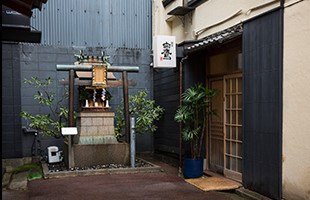
Phone: 082-241-0927
- Address:
- 1-6 Nagarekawacho, Naka-ku, Hiroshima, Hiroshima
- Open:
- 5:30 pm - 11:00 pm
- Closed:
- Sunday, National Holidays
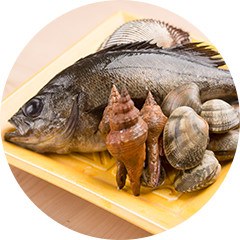 The terroir of Setouchi
The terroir of Setouchi
The terroir of Setouchi

"Hiroshima is famous for its oysters, but Setouchi offers much more," chef Kawaguchi assures us. Spiral-shaped spindle snails, for example, are also popular in Hiroshima. We found them exquisitely crunchy. The restaurant also serves high-quality red and purple sea urchin from the Seto Inland Sea beyond Hiroshima Prefecture and sea urchin from Suo-Oshima on rice.

The immaculate Japanese cypress counter is Hakutaka's signature feature. Repeat customers from all over the country enjoy the relaxing atmosphere, which is uncommon for such a well-established kappo restaurant.

Today's assorted sashimi. Sea bream, sayori (halfbeak) seasoned with kelp, spindle snail and locally grown wasabi.
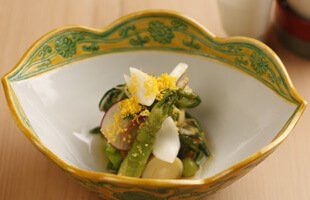
Refreshing Spring Vegetable Dish with local fiddlehead ferns, horsetails and spring shiitake mushrooms.
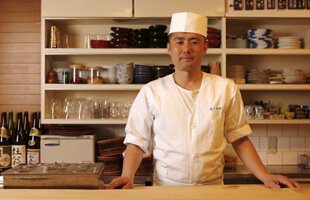
"Since I work nearby at the counter, I can respond swiftly to customers' every whim," says Mr. Kawaguchi.

The choice Hiroshima sake includes Kamotsuru, Tenpoichi and Harutaka, for which the restaurant was named.
Venerable yet relaxed
Hakutaka was established in 1959 by the grandmother of current third-generation owner Yohei Kawaguchi. It's one of the longest-running kappo (intimate counter) restaurants in Hiroshima and took its name from a brand of sake that's been sold since the Taisho era.
"My great-grandfather worked at a general store selling sake such as Kamotsuru from Hiroshima and Hakutaka from Nada," Chef Kawaguchi explains. "My grandmother personally visited the sake brewery in Nada to win permission to use the name for her restaurant. She loved this place and often said she would work here until the end". Chef Kawaguchi has been carrying on her passion for the restaurant since she passed away in 2016.
He cares for the splendid Japanese cypress countertop every day without exception. Its boldness both complements and contrasts with the peaceful atmosphere. The tableware includes Wajima-nuri lacquerware and Kyoto pottery. Almost all have been used since the restaurant's establishment and the hotaru-yaki cups, as delicate as usuhari glass, can no longer be found on the market.
Such details are worthy of a kappo restaurant and match the orthodox cuisine. The sashimi, long a source of pride for the restaurant, is only made from local catch, "because we have many customers from other prefectures," chef Kawaguchi informs us. And the Spring Vegetable Dish features over 10 ingredients harvested from nearby mountains, including nanohana (field mustard), aralia sprouts and lily bulbs.
Accompanying the superb cuisine is the kind of lavish hospitality you can only find at kappo restaurants, which makes the experience all the more pleasing. For first-time visitors to Hiroshima seeking to experience local cuisine, there is no place we could recommend more.

Phone: 082-241-0927
- Address:
- 1-6 Nagarekawacho, Naka-ku, Hiroshima, Hiroshima
- Open:
- 5:30 pm - 11:00 pm
- Closed:
- Sunday, National Holidays
Sushi Yamamoto鮨 山もと
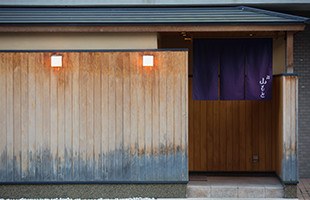
Phone: 086-232-3900
- Address:
- 1F, Residence Yuminocho, 12-6 Yuminocho, Kita-ku, Okayama, Okayama
- Open:
- 0:00 pm - 2:00 pm (maximum 10 guests)
6:00 pm - 10:00 pm (last entry 8:30 pm) - Closed:
- Sunday, National Holidays
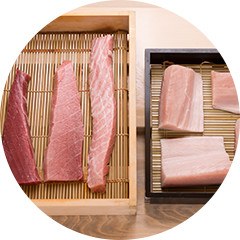 The terroir of Setouchi
The terroir of Setouchi
The terroir of Setouchi

Chef Yamamoto attaches importance to the distinctive character of Setouchi ingredients. Local specialties such as octopus, anago (conger eel), sea bream and sawara (Spanish mackerel) are all fresh from Setouchi and served with mild nigiri rice from Okayama Prefecture. He also procures certain fish (such as tuna) from Tsukiji and sea urchin from the best areas nationwide to suit his more Edomae style dishes.

Chef Yamamoto uses traditional Edomae sushi techniques to make Okayama-style sushi. While mild mannered, he conveys pride through the excellence of every serving.

Young tai (sea bream) is flavorful throughout the year. Its gentle umami is accentuated with a light kelp seasoning.

The delicious Japanese Halfbeak is first seasoned with salt and vinegar, then brushed with boiled-down vinegar.

Beka squid packed with exquisitely textured roe is served with miso paste and young Japanese pepper leaf (March to May).
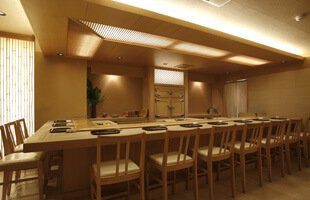
The sushi restaurant atmosphere is classic, with a Japanese cypress counter and old-fashioned icebox.
Mild, classic sushi
Chef Yamamoto worked at Uosho, one of Okayama's most renowned sushi restaurants, for 15 years before opening Sushi Yamamoto. Like Uosho, he uses Edomae technique to make sushi with locally caught fish and regionally grown rice.
"Fish in the Inland Sea are not as vigorous as those in the Sea of Japan," Chef Yamamoto informs us. "Their taste is also lighter, reminding one of the mild nature of Okayama Prefecture's citizens."
Although it depends on the type of fish, he generally adds minimal salt and vinegar to the rice to further express the mild character of Okayama. Young tai (sea bream) nigiri, for example, is only lightly seasoned with kelp. When the combination of tai and rice melts harmoniously in your mouth, you feel the joy of spring's arrival. "Above all," Chef Yamamoto tells us, "I want to prepare nigiri sushi that expresses the character of Okayama".

Phone: 086-232-3900
- Address:
- 1F, Residence Yuminocho, 12-6 Yuminocho, Kita-ku, Okayama, Okayama
- Open:
- 0:00 pm - 2:00 pm (maximum 10 guests)
6:00 pm - 10:00 pm (last entry 8:30 pm) - Closed:
- Sunday, National Holidays
Hirotohiroto

Phone: 082‒247‒9889
- Address:
- 4-17, Fujimi-cho, Naka-ku, Hiroshima, Hiroshima
- Open:
- 6:00 pm - 12:00 pm (Reservation required)
- Closed:
- Monday (open if national holiday and closed the next day)
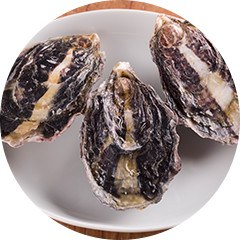 The terroir of Setouchi
The terroir of Setouchi
The terroir of Setouchi

Chef Hiroto used to procure ingredients from all regions of Japan, but now only serves materials he personally tries at farms. It's a matter of establishing mutual trust with producers. One example is striped oysters from Osaki-kamijima. Another of his favorites is Okuro-kamishima oysters. When he hears of remarkable ingredients, even in faraway prefectures, he travels to meet the farmers and try them himself.

A rich, raw oyster from Osaki-kamijima in the Seto Inland Sea atop sweet cauliflower panna cotta mousse.

Tender A5-grade roasted rump from Hiroshima, slowly cooked and served with red wine sauce.

Guests are encouraged to dine at the counter and share the refreshing atmosphere of the open kitchen.
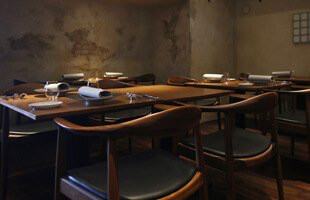
The dining room feels Scandinavian with its rosewood floor and fine walnut chairs.

The wine cellar includes over 200 labels, mainly Burgundies, that perfectly match the simply prepared dishes.
Fresh and finicky
"I may be too particular about quality and freshness," chef Yoshiyuki Hiroto admits. Ever since the bird flu scare, when poultry imports such as French duck were prohibited, he has personally selected only the best possible ingredients to fully satisfy demanding customers seeking a fine dining experience.
He visits farms to hear the stories of producers, exchange culinary tips and build close relationships. "The other day, I heard of just the right duck for my restaurant," he remarks, "and flew to Kagoshima to meet the producers myself".
Among his fine ingredients are oysters from Osaki-kamijima in the Seto Inland Sea. Native to Hiroshima and raised in secluded oyster farms where salt farming formerly flourished, these striped oysters are less salty than most and have a mild, rich flavor that stole chef Hiroto's heart. With high-quality ingredients like these at hand, chef Hiroto is confident that his loyal customers will be pleased.
"When dining at popular Tokyo restaurants, a surprising number of dishes fail to satisfy me," he adds. I prefer something that stimulates the palate and leaves a lasting impression." As mentioned earlier, he may go overboard on quality and freshness, but that's good news for his customers.

Phone: 082‒247‒9889
- Address:
- 4-17, Fujimi-cho, Naka-ku, Hiroshima, Hiroshima
- Open:
- 6:00 pm - 12:00 pm (Reservation required)
- Closed:
- Monday (open if national holiday and closed the next day)
*Articles are written based on information available at the time of publication.
More restaurants


